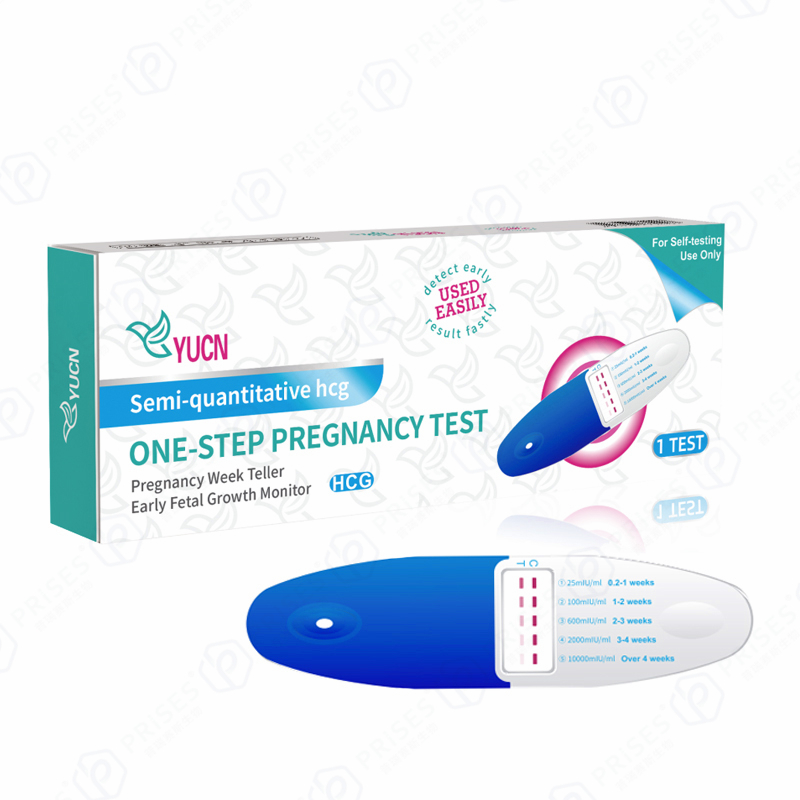12 月 . 19, 2024 19:14 Back to list
Understanding OPK Ovulation Tests for Accurate Fertility Tracking and Planning
Understanding OPK A Guide to Ovulation Testing
When trying to conceive, understanding your fertility cycle is crucial. One effective way to track ovulation is through the use of ovulation predictor kits (OPKs). These kits are designed to help identify the fertile window in a woman’s cycle, making it easier to plan for conception. In this article, we will explore how OPKs work, their benefits, and important tips for their use.
What is an OPK?
An Ovulation Predictor Kit (OPK) is a home testing kit that detects the surge in Luteinizing Hormone (LH) in a woman’s urine. The LH surge typically occurs 24 to 36 hours before ovulation, indicating that ovulation is likely to happen soon. By identifying this surge, women can pinpoint their most fertile days and increase their chances of conception.
How OPKs Work
OPKs operate on the principle of hormonal changes during the menstrual cycle. Throughout the cycle, hormone levels fluctuate, but there is a significant rise in LH just before ovulation. When using an OPK, you simply collect urine samples and dip the testing strip or use the midstream test at the same time each day, preferably in the afternoon. A noticeable darkening of the test line compared to the control line indicates an LH surge.
Types of OPKs
There are two main types of OPKs available traditional strip tests and digital tests. Traditional strip tests are generally less expensive and require visual comparison of lines, whereas digital tests provide a clear reading, eliminating any guesswork. Some advanced OPKs even connect to smartphone apps, allowing for better tracking and analysis of your hormone levels over time.
Benefits of Using OPKs
1. Increased Accuracy OPKs provide a more accurate prediction of ovulation compared to calendar tracking alone. Women often experience variability in their cycles, and OPKs can adapt to these changes.
opk ovulation test

2. User-Friendly Most OPKs are easy to use and have straightforward instructions. They require no medical procedures or appointments, making them a convenient option for home testing.
3. Motivation for Planning Knowing your peak fertility days can motivate couples to engage in timed intercourse, thus increasing the likelihood of conception.
4. Health Insights Using OPKs can also provide insights into women’s overall reproductive health. Tracking patterns over time can help identify irregularities in cycles, which can be useful information for healthcare providers.
Tips for Using OPKs
1. Timing is Key Begin testing a few days before you expect to ovulate. Most kits recommend starting a few days before the estimated mid-cycle point, allowing you to catch the LH surge.
2. Optimal Time for Testing Urine concentration is higher during the afternoon, making it the best time for testing, although some women may prefer morning tests.
3. Read Instructions Carefully OPKs can vary in use and interpretation. Be sure to read and follow the specific instructions that come with your kit.
4. Track Other Signs Combining OPK results with other ovulation signs, such as changes in cervical mucus or basal body temperature can provide a more comprehensive view of your fertility.
Conclusion
OPKs are a valuable tool for women looking to conceive. By understanding how to effectively use OPKs and recognizing the signs of ovulation, you can significantly enhance your chances of successful conception. Always consult with a healthcare provider for personalized advice, especially if you have concerns about fertility or irregular cycles. Happy testing, and may your journey to parenthood be a successful one!
-
Dengue NS1 Rapid Diagnostic Test Kit
NewsMar.07,2025
-
Dengue NS1 Rapid Diagnostic Test Kit
NewsMar.07,2025
-
Dengue NS1 Rapid Diagnostic Test Kit
NewsMar.07,2025
-
Transferrin Rapid Test Cassette Tumor Marker TF Card
NewsMar.07,2025
-
Malaria Pf Pan Rapid Diagnostic Test Kit
NewsMar.07,2025
-
malaria pf / pan ag rapid test
NewsMar.07,2025

